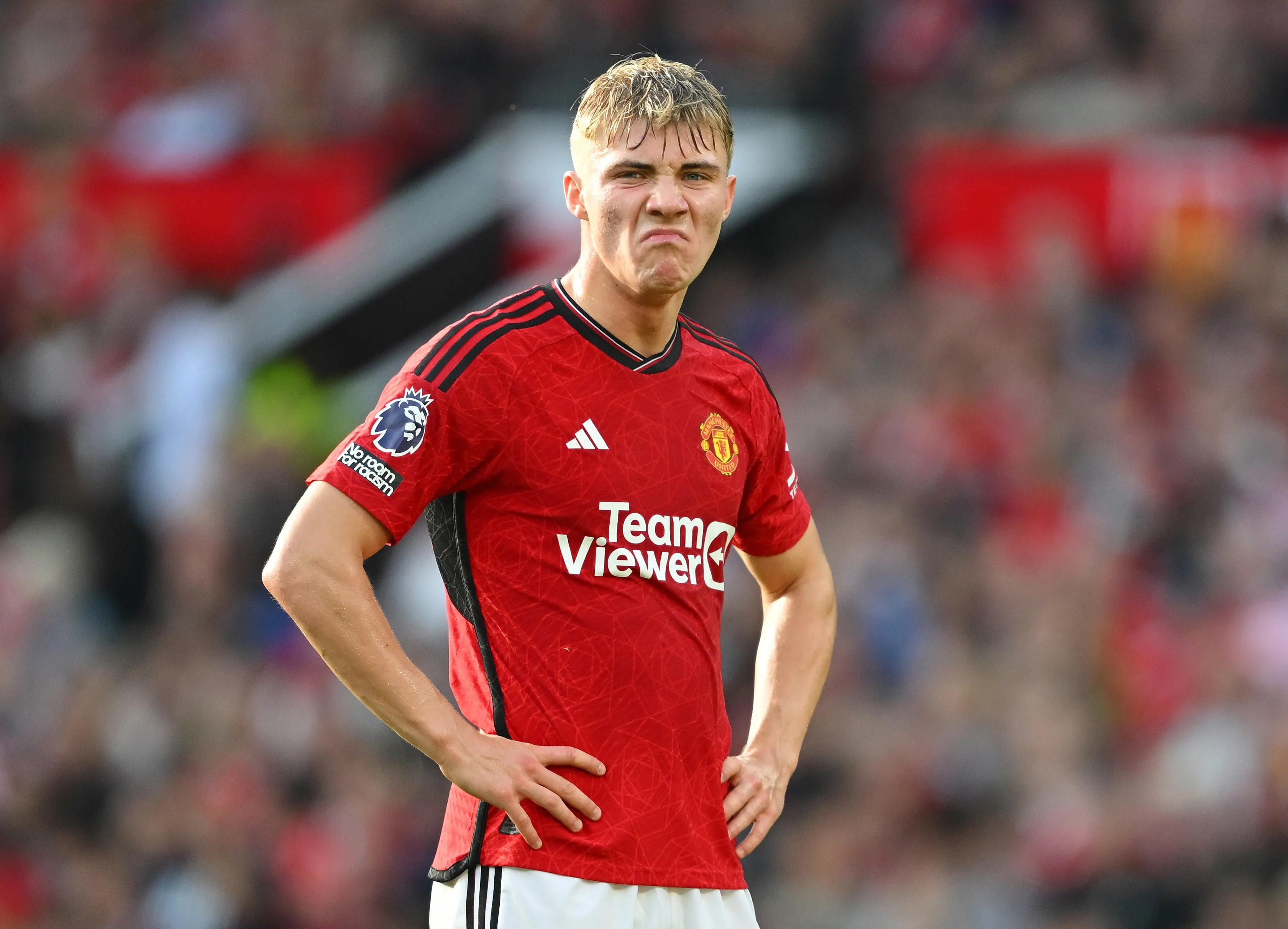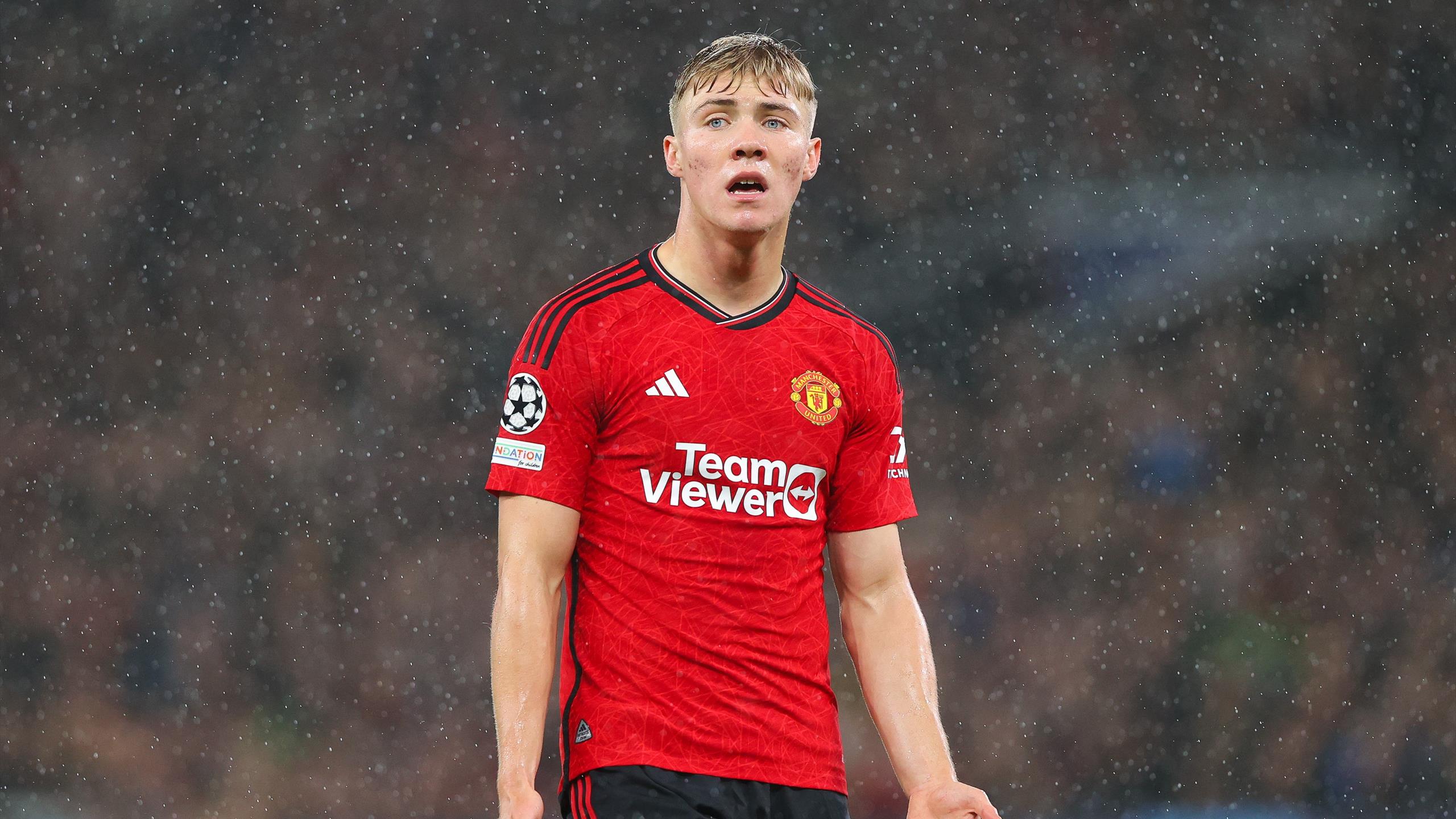Despite the fact that it was only a goal against League Two opponents, Rasmus Højlund’s score in the 4-2 FA Cup victory against Newport County said volumes about the striker’s poor first few months of the season. At Manchester United, Denmark is playing.
Just take a look at his celebration, if you can even call it that. It looks like he is about to let out all of his pent-up dissatisfaction and wrath. There was scarcely any sign of a smile; rather, there was a reaction that could be interpreted as a message addressed to his teammates that was not exactly subtle.

Not a single inference at all. During the underwhelming triumph that took place during the weekend before last, it appeared as though Hojlund was upset on multiple occasions. When Alejandro Garnacho had possession of the ball on the left side of the penalty area during the first half, he made the decision to shoot from a narrow angle rather than passing it into the six-yard box, where Højlund was waiting for a touch. Although the Argentina international’s shot hit the crossbar, it is reasonable to say that it was an unreasonable decision. Højlund’s reaction, which was not directed at his teammate, was unmistakable.
Then, in the latter part of the second half, Garnacho once again had control of the ball on the left side of the box. However, rather than passing the ball low into a potentially hazardous area towards Antony and Højlund, he dropped inside and was promptly blocked. Take a break. This time, Højlund expressed his feeling of dissatisfaction. Therefore, when Højlund ultimately scored a goal in the stoppage time of the second half, the bad emotions that he experienced were well warranted.
All things considered, that match is a representation of his career at Manchester United in some respects. Hojlund put in a lot of effort and assisted others in playing as good as he could, but the lack of service prompted him to look for opportunities on his own. Even his goal was a part of the category; he was simply in the right place to capitalize on the situation when Omari Forson’s cross shot was saved by the goalie of the opposing team. That strike was the lone shot that Højlund had in a contest in which United had 22 shots, and it took over 94 minutes for United to score one of those shots. There were a total of six shots taken by Antony, Bruno Fernandes and Garnacho each took five, and even five players on the Newport side each took two shots.

If we were to assert that Højlund is not responsible for his personal goal drought throughout this season, we would be making an error. Despite the fact that many people found it intolerable to wait for his first goal in the Premier League, the match that took place on Sunday was simply the most recent example of the Danish striker’s lackluster performance in front of the net. owing, at the very least in part, to the individuals close to you.
The Premier League season has seen only two players from United who have generated more than one open-ball opportunity for Højlund. These two players are Marcus Rashford and Fernandes, who have each created four opportunities for Højlund. During the current season of the Premier League, there have been a total of 93 situations where a player has created more opportunities for a teammate. The player who has created the most opportunities is Mohamed Salah, who has created 19 opportunities for Darwin Núñez.
There were five of those 93 combinations that were accounted for by Manchester United, with Fernandes replacing Antony and Garnacho seven times individually. Although the creative ability of Fernandes is of great importance to Manchester United, the Portuguese midfielder cannot “take care” of the entire team on his own. It was owing to the difference in playing positions as well as the amount of time spent playing together that he coordinated with Rashford the most (24 times, which was the most in the Premier League). However, there was no one to be located, despite the fact that Hojlung, a new recruit, was the one who required assistance.
As a result, Højlund’s expected goals (xG) index in the Premier League this season is less than that of Matt Cash, the right-back for Aston Villa, and he is ranked 93rd on the list of players who have xG statistics. Even though Hojlund rated 23rd among strikers who played regularly in the Premier League this season, he only received 12 passes from teammates to generate opportunities. This is despite the fact that Hojlund was played by his teammates. Furthermore, among the 42 attackers who have been provided with at least five critical passes, Højlund stands out as one of the four strikers who have not gotten that quantity of assists from their teammates. The other three strikers in this category are Rodrigo Muniz, Armando Broja, and William Osula.

So, what is the reason that Hojlund has a higher goal total in the Champions League? The fact that he has five goals demonstrates how useful he is. Also in the Champions League, Hojlung was given eight opportunities by his teammates in six matches, which is a significant difference from the twelve opportunities that were given to him in sixteen matches in the Premier League. One of the most straightforward explanations is that when Manchester United travels to Europe, they play deeper and the majority of their players are required to remain in their own half. As a result, when they counterattack, they only give the ball to Hojlund and no one else.
There is a dilemma for coach Ten Hag, who is being questioned about his ability to alter tactics, and that problem is figuring out how to take advantage of Hojlund’s scoring talent. In the present moment, Hojlund is being forced to play too deep. When compared to Erling Haaland (5.5), Callum Wilson (8.4), and Núñez (8.6), the striker experiences 16.1 touches of the ball on average before launching a shot. This is significantly higher than the norm. On the other hand, Hojlund is required to “work and feed himself,” whilst the other strikers are just concerned with making the most of opportunities that present themselves. Højlund, according to statistics, is making a substantial number of runs without the ball in the penalty area every 90 minutes (11.1 times). This places him in fourth place on the list of strikers who have played at least 500 minutes in the Premier League this season, surpassing Haaland by a significant margin (8.7) over the course of the season. The issue is that only 35.3% of them were targeted runs, which means that they were intended to suggest to teammates that they should pass the ball. The remaining runs were just Hojlund’s own efforts and were not in accordance with any lessons.
It is possible that the feelings and demeanor that he displayed over the weekend are a positive indication that Hojlund is beginning to take issues into his own hands more, and that he is prepared to yell when his demands and the interests of the team are competing for attention. I am dissatisfied.